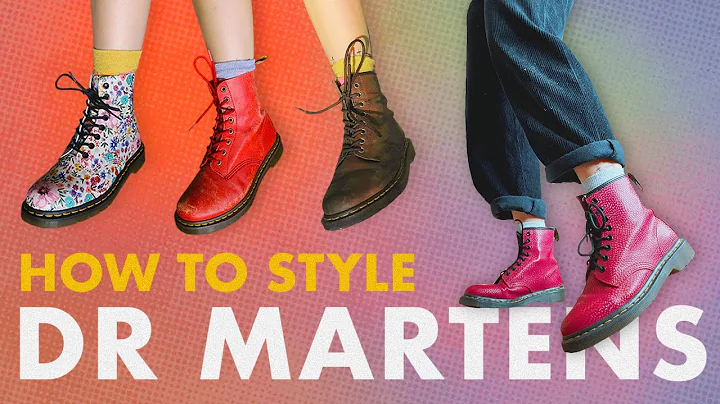Healing Acid Attack Victims: The Journey to Recovery
Table of Contents:
I. Introduction
A. Acid Attacks: A Life-Altering Crime
B. The St. Andrew Center at Broomfield Hospital
II. The Journey to Recovery
A. Admission and Initial Treatment
- Showering off the Acid
- Determining the Treatment
B. Long-Term Treatment and Rehabilitation
- Skin Grafts and Donor Skin
- Pressure Garments for Scar Management
C. Reconstructive Surgery
- Breaking Down Scarring
- Laser Treatment for Scar Improvement
III. The Psychological Impact of Acid Attacks
A. The Mental Scars of Survivors
B. The Role of Counselling and Therapy
IV. The Rising Incidence of Acid Attacks
A. Underreporting: A Major Issue
B. Alarming Statistics: The Increase in Victims
V. Conclusion
A. Accepting the Scars and Moving Forward
Acid Attacks: A Journey of Healing and Resilience
Acid attacks are brutal crimes that leave victims with not only physical scars but also deep emotional wounds. The St. Andrew Center at Broomfield Hospital provides specialized care for individuals who have been attacked with acid, offering them a chance to heal and rebuild their lives. In this article, we will delve into the journey of acid attack survivors, from the initial admission and treatment to the long-term rehabilitation process. We will also explore the psychological impact of these traumatic incidents and the rising incidence of acid attacks in recent years.
Acid attacks have the power to shatter lives in mere seconds, with devastating consequences that can last a lifetime. Victims are left disfigured, experiencing intense pain and enduring numerous surgeries and treatments to repair the damage caused by corrosive substances. The St. Andrew Center at Broomfield Hospital serves as a beacon of hope for these survivors, offering them comprehensive medical care and support throughout their recovery journey.
Upon admission to the hospital, acid attack victims are immediately attended to by the medical team. The first step is to remove any remaining acid from the victim's body through a thorough showering process. This is crucial as the acid continues to burn the skin until it is completely washed away. The process can be incredibly painful, requiring the application of large amounts of fluid to dilute the acid and mitigate its effects.
Once the initial burn has been treated, the medical team assesses the depth of the injury and determines the appropriate course of treatment. In cases where the skin has been severely damaged, skin grafts are performed using donor skin or the patient's own skin from unaffected areas of the body. This helps to accelerate the healing process and minimize scarring. In addition, patients are fitted with personalized pressure garments to apply constant pressure on the scars, preventing them from becoming raised or lumpy.
Reconstructive surgery plays a vital role in restoring functionality and improving the appearance of acid attack survivors. Surgeons work tirelessly to break down scar tissue and alleviate the pressure on areas that have been affected. This allows for better movement and range of motion, helping patients regain a sense of normalcy in their lives. Laser treatments are also utilized to further improve the appearance of scars, promoting collagen production and breaking up bands of constriction.
While the physical scars of acid attacks are evident, the psychological impact cannot be overlooked. Survivors often grapple with feelings of fear, trauma, and a shattered sense of safety in the world. It is essential for these individuals to receive counseling and therapy to address the emotional scars left behind. Adequate support for victims, their families, and even the medical staff who treat them is crucial in aiding the long-term healing process.
Tragically, acid attacks remain vastly underreported, with many victims choosing not to come forward due to fear, embarrassment, or concerns about reprisals. The true extent of the problem is much larger than official statistics indicate, highlighting the urgent need for awareness, intervention, and harsher penalties to deter such heinous crimes. The frequency of acid attacks has escalated dramatically in recent years, with hospitals witnessing a significant rise in the number of victims seeking medical assistance.
In conclusion, acid attacks leave a lasting impact on the lives of survivors, both physically and emotionally. However, through the dedicated efforts of medical professionals, counselors, and support networks, these individuals can find the strength to heal and rebuild their lives. It is essential for society to stand united against this horrific crime, working towards prevention, support, and justice for acid attack victims.
Highlights:
- Acid attacks inflict not only physical but also psychological scars on their victims.
- The St. Andrew Center at Broomfield Hospital provides specialized care for acid attack survivors.
- Treatment includes immediate acid removal, skin grafts, pressure garments, and reconstructive surgery.
- Psychological counseling and therapy are crucial for survivors to cope with the trauma.
- Acid attacks are often underreported, and their incidence has been alarmingly increasing in recent years.
- Society must raise awareness and take action to prevent and address acid attacks effectively.
FAQ:
Q: What are acid attacks?
A: Acid attacks are criminal acts that involve the deliberate use of corrosive substances to cause severe harm and disfigurement to the victim.
Q: How are acid attack victims treated?
A: Acid attack victims receive comprehensive medical care, including immediate removal of the acid, skin grafts, pressure garments, and reconstructive surgery. Psychological support is also provided to help survivors cope with the trauma.
Q: Are acid attacks a widespread issue?
A: Unfortunately, acid attacks are underreported, making it challenging to determine the true scale of the problem. However, the number of acid attack victims seeking medical assistance has been increasing significantly in recent years.
Q: What can society do to prevent acid attacks?
A: Preventing acid attacks requires a multifold approach, including stricter penalties for offenders, education and awareness campaigns, support for victims, and amending regulations related to the sale and possession of corrosive substances.
Q: How can acid attack survivors rebuild their lives?
A: With the help of medical professionals, counseling, support networks, and their own resilience, acid attack survivors can gradually heal and rebuild their lives. It is crucial for society to provide a safe and inclusive environment that allows survivors to regain their confidence and lead fulfilling lives.
Resources:
- [St. Andrew Center at Broomfield Hospital](insert URL)







